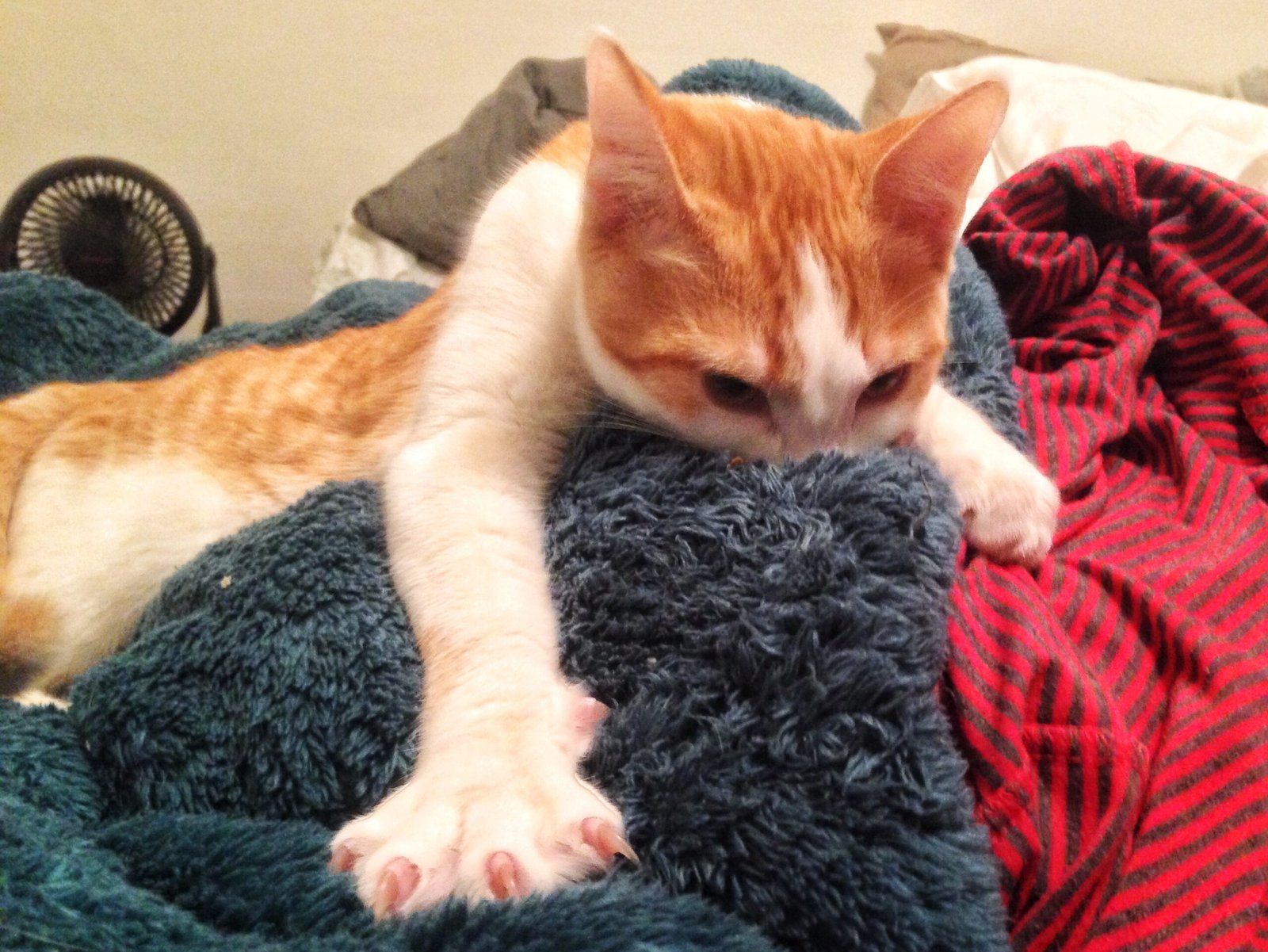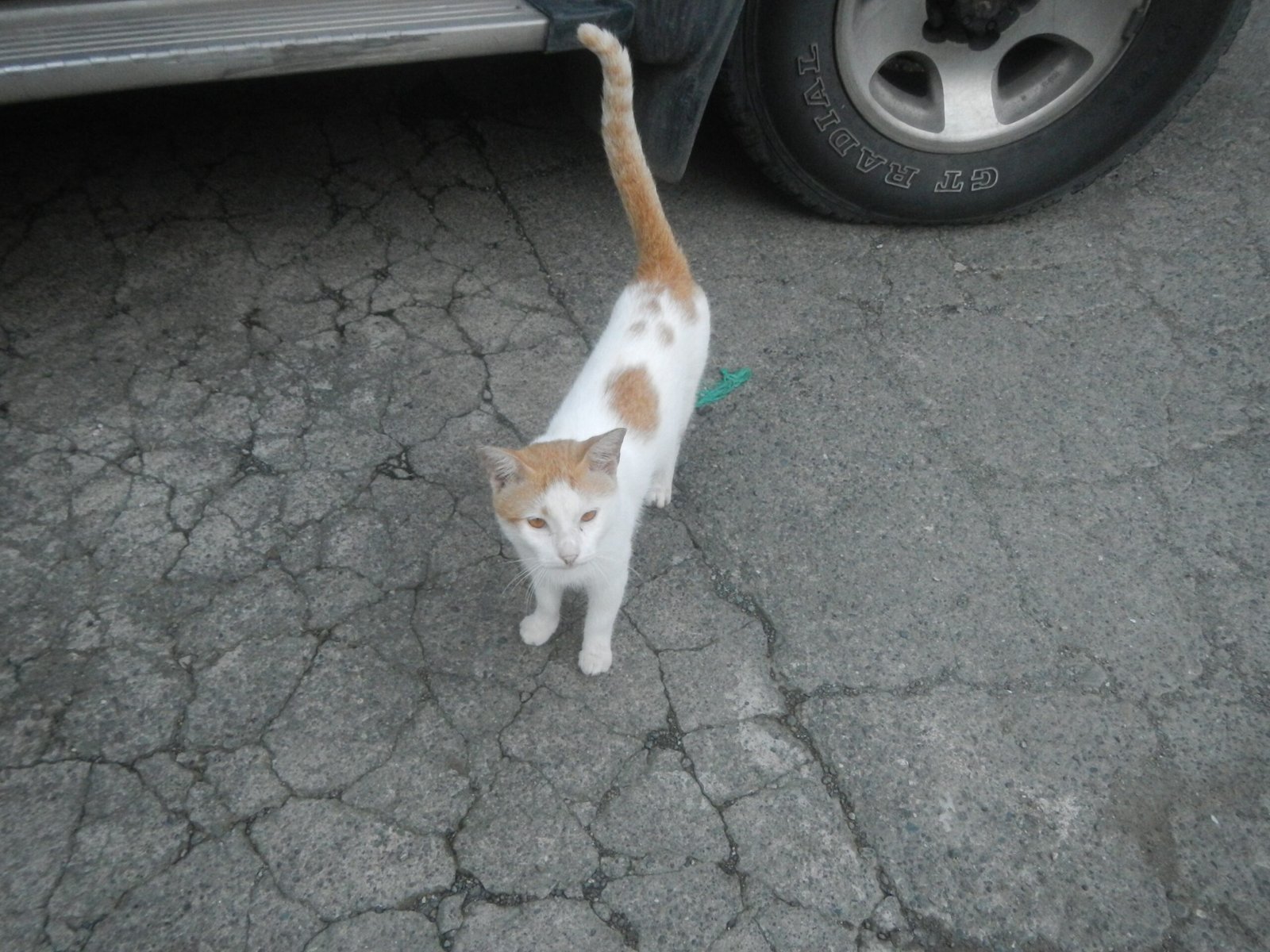Cats might seem mysterious, but they’re actually trying to talk to us all the time—it just takes a little decoding. From gentle purrs and head nudges to twitching tails and intense stares, every move has meaning. A slow blink says, “I trust you,” while a sudden nip might mean, “I’ve had enough now.” By paying attention to these behaviors, you’ll start to understand your cat’s moods, needs, and even their affection in a whole new way. It’s like learning a secret language—just with more whiskers and attitude!
Tail Language: The Feline Mood Barometer
A cat’s tail is like a living mood ring—constantly shifting, giving clues to their feelings. When your cat holds their tail high, it usually means they’re happy and confident, almost like waving hello. If the tail quivers or vibrates, they might be excited or greeting you after a long day apart. A puffed-up tail, on the other hand, signals fear or sudden surprise, much like a human’s startled gasp. Sometimes, a slow, swishing tail reflects irritation or concentration, especially if they’re hunting a toy or watching birds through the window. Tucking the tail low or under the body often shows anxiety or submission. Next time your cat flicks or curls their tail, imagine it as a flag waving their current mood for you to see.
Meowing: The Unique Cat-to-Human Language
Did you know that adult cats rarely meow at other cats? They save their meows just for us humans. Each meow is like a personalized ringtone—short, chirpy meows might mean they’re saying hello, while longer, drawn-out meows can signal hunger or demand attention. Some cats even develop a specific meow just for their favorite person. A rapid series of meows can sound almost like a complaint or plea: “Feed me already!” In contrast, a soft, gentle meow may be a request for cuddles or affection. Learning the subtle differences in your cat’s vocalizations is a bit like decoding a secret language just between you and your furry friend.
Purring: More Than Just Contentment
We often think purring means happiness, but it can express so much more. When your cat curls up on your lap and purrs, it’s usually a sign of pure bliss. But cats also purr when they’re anxious, unwell, or even frightened—almost like a child humming to self-soothe. Some experts believe purring helps cats heal, as the vibrations may promote recovery and reduce pain. If your cat purrs during a vet visit, they might be trying to comfort themselves or even signal that they need gentle handling. Always pay attention to the situation: a happy, relaxed purr feels different from a tense or shaky one. It’s their way of whispering, “I need you,” or “I feel safe with you.”
Kneading: A Throwback to Kittenhood

Have you felt those soft, rhythmic paws pressing into your lap, like a tiny baker kneading dough? This adorable behavior often traces back to kittenhood, when nursing kittens knead their mothers to stimulate milk. Adult cats knead when they feel especially cozy, content, or affectionate—it’s their way of saying, “I trust you, and you make me feel safe.” Sometimes, cats knead before settling down for a nap, almost like fluffing up a pillow. If your cat kneads you (even with claws!), it’s a high compliment. They’re sharing a little piece of their kitten heart with you, a sign of ultimate comfort.
Slow Blinking: The Kitty Kiss
Have you ever noticed your cat slowly closing and opening their eyes while looking at you? This gentle motion is known as the “slow blink,” and it’s the feline equivalent of blowing you a kiss. In the wild, closing their eyes signals trust, since a cat would never let their guard down around someone they fear. If your cat slow-blinks at you, they’re saying, “I’m safe with you.” Try returning the gesture with your own slow blink—they just might blink back, confirming the special bond between you. It’s a silent love letter from your cat, written with their eyes.
Head Butting and Cheek Rubbing: Marking You as Family
When a cat bumps their head or rubs their cheek against you, it’s not just for affection; it’s a claim of ownership! Cats have scent glands on their cheeks and heads. By rubbing against you, they’re leaving their scent and marking you as part of their inner circle. This behavior is called “bunting,” and it’s a sign of deep trust and love. You’ll see cats do this with each other to reinforce social bonds. So, when your cat lovingly headbutts you, they’re saying, “You belong to me, and I belong to you.” It’s a powerful, invisible handshake.
Bringing You “Gifts”: The Hunter’s Offering
Few things surprise cat owners more than waking up to a “gift” from their feline friend—sometimes a toy, sometimes something less pleasant! This behavior stems from their natural hunting instincts. In the wild, mother cats bring prey to their kittens to teach them how to eat and survive. When your indoor cat drops a toy or (gulp) a real critter at your feet, they’re sharing their “catch” and expressing affection or care. It’s their way of saying, “Look what I did for you!” While it might not be your favorite present, it’s a sign your cat sees you as family.
Grooming You: A Sign of Deep Trust
If your cat licks your hand, hair, or even your face, consider it the highest compliment. Grooming is a social behavior among cats, reserved for those they love and trust most. By licking you, your cat is including you in their inner grooming circle, just as they would with a close feline friend. It’s also a way to comfort or soothe you (and themselves), especially if they sense you’re upset. Sometimes, they might even nibble gently, mimicking the way a mother cat grooms her kittens. When your cat grooms you, they’re saying, “We’re family, and I care about you.”
Scratching: More Than Just Sharpening Claws
Scratching isn’t just about keeping claws sharp—it’s also a powerful way for cats to communicate. Each scratch leaves both a visible mark and a scent from special glands in their paws. By scratching furniture, doors, or scratching posts, your cat is marking territory and saying, “This is my space.” Sometimes, scratching near you or in your favorite room is an invitation to interact or a sign they feel safe with you nearby. If your cat scratches after you come home, it can be a greeting, a way of releasing excitement or stress. Scratching is both a conversation and a comfort for your cat.
Following You and Shadowing Your Steps

Ever feel like you have a furry little shadow? When your cat follows you from room to room, it’s a clear sign of attachment and curiosity. They want to be near you, share your space, and watch what you do. For some cats, it’s also a way of protecting you—keeping an eye out for danger, even if it’s just the vacuum cleaner! Following you might mean they want attention, food, or just your company. It’s their way of saying, “You’re important to me, and I want to be wherever you are.”
Understanding your cat’s quirky behaviors can feel like cracking a secret code—but once you get it, your bond only deepens. From tail flicks to slow blinks, they’re constantly trying to tell you something. Paying attention to these signals not only helps meet their needs, but also shows your cat they’re truly heard. The more you “listen,” the stronger your connection becomes. Communication with your feline friend isn’t just possible—it’s pretty rewarding, too! What surprising cat behavior caught you off guard?

Esther is from India; the heartbeat of South Asia, holding a Master’s degree in Zoology and a postgraduate diploma in Animal Welfare. Her enthusiasm for animal welfare drives her passion and dedication to working for animals, ensuring their well-being, and advocating for their rights. With a solid academic background and hands-on experience, she is committed to making a positive impact in the field of animal welfare. In her free time, she enjoys embroidery and sewing. As a Chennaite from Tamil Nadu, Esther loves Bharathanatyam, an Indian classical dance form.





